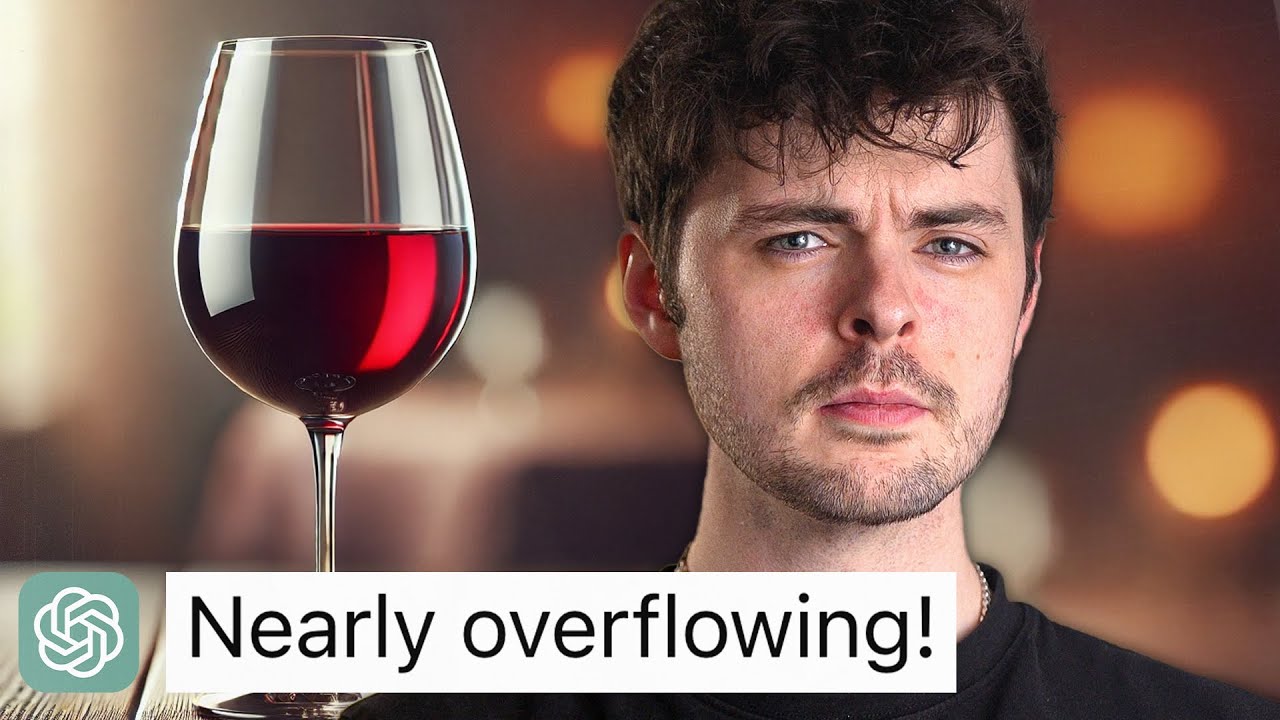The video humorously examines ChatGPT’s inability to generate an image of a full glass of wine, highlighting how its training data may lack sufficient examples of this specific scenario. It draws philosophical parallels to David Hume’s empiricism, discussing the limitations of both AI and human cognition in relation to perception and the generation of ideas.
The video explores the peculiar limitations of AI image generation, specifically focusing on ChatGPT’s inability to produce an image of a glass of wine filled to the brim. The narrator humorously illustrates this by repeatedly asking for a full glass of red wine, only for the AI to generate images that are either half full or not quite full enough. This leads to a discussion about how AI, like ChatGPT, generates images based on patterns learned from vast datasets, which may not include the specific scenario of a wine glass filled to the brim, as it is not a common way to serve wine.
The narrator explains that when asked for a glass of wine, ChatGPT relies on its training data, which consists of images labeled with descriptions. It identifies patterns and combines concepts to generate images. However, the challenge arises because there are likely very few images of a wine glass filled to the brim in its dataset, leading to its repeated failures to produce the requested image. This situation highlights the limitations of AI in generating specific visual representations that are not commonly encountered.
The discussion then shifts to the philosophical implications of this phenomenon, particularly referencing the ideas of 18th-century philosopher David Hume. Hume’s empiricism posits that all human knowledge is derived from sensory experiences, which aligns with how AI generates ideas from its impressions. The narrator draws parallels between Hume’s theory and ChatGPT’s functioning, suggesting that both rely on prior experiences to create new ideas or images. This comparison raises questions about the nature of perception and the limitations of both human and AI cognition.
The video also delves into Hume’s challenge regarding the relationship between impressions and ideas, using the example of a missing shade of blue to illustrate a counterexample to his theory. While Hume believed that all ideas must have corresponding impressions, the narrator suggests that the ability to imagine the missing shade of blue complicates this notion. However, upon further examination, it becomes clear that the imagined shade is a complex idea formed by blending adjacent colors, rather than a simple idea without a corresponding impression.
Ultimately, the narrator concludes that while ChatGPT may exhibit Humean-like thinking, it lacks the ability to abstract concepts in the same way humans do. This raises intriguing questions about the differences between human cognition and AI processing. The video ends by inviting viewers to reflect on the implications of these cognitive limitations and whether they reveal something fundamental about the nature of understanding and perception in both humans and artificial intelligence.
